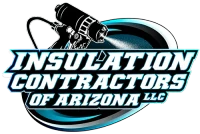Arizona's extreme temperatures create significant challenges for livestock operations. Proper barn insulation is essential for animal welfare, productivity, and operational efficiency. Our agricultural insulation solutions help create optimal environments that keep animals comfortable and productive year-round.
Dairy Operations
- Milking parlors
- Free stall barns
- Calf housing
- Feed storage areas
- Milk houses
Cattle & Beef
- Feedlot shelters
- Breeding facilities
- Show barns
- Veterinary areas
- Handling facilities
Equine Facilities
- Horse barns
- Riding arenas
- Tack rooms
- Breeding barns
- Veterinary clinics
Poultry & Swine
- Broiler houses
- Layer barns
- Farrowing houses
- Nursery buildings
- Processing areas
Dairy Cattle
Milk production drops 10-25% when temperatures exceed 80°F
Feed intake decreases 3-5% for every 2°F above 80°F
Beef Cattle
Daily weight gain reduced by 0.5-1.0 lbs in heat stress
Breeding success rates drop 20-30% in extreme heat
Poultry
Egg production decreases 15-20% above 85°F
Feed conversion efficiency drops 12% in hot conditions
Horses
Performance impaired above 80°F barn temperature
Increased risk of colic and dehydration
40,000 sq ft Free Stall Barn
Before Insulation:
- Interior temps: 105°F+ in summer
- Milk production: Down 22%
- Cooling costs: $3,500/month
- Heat stress deaths: 8-10/year
After Insulation:
- Interior temps: Max 85°F
- Milk production: Increased 18%
- Cooling costs: $1,800/month
- Heat stress deaths: Zero
ROI achieved in 22 months through increased production and energy savings
| Facility Type | Temperature Reduction | Energy Savings | Productivity Gain |
|---|---|---|---|
| Dairy Barn | 15-25°F | 40-50% | 15-20% |
| Poultry House | 10-20°F | 35-45% | 12-18% |
| Horse Barn | 15-20°F | 30-40% | Improved health |
| Swine Facility | 12-18°F | 35-45% | 10-15% |
Typical Barn Insulation Investment
- Small Barn (5,000 sq ft): $7,500 - $12,500
- Medium Barn (15,000 sq ft): $22,500 - $37,500
- Large Facility (40,000+ sq ft): $60,000 - $100,000
Return Sources
- Increased production (milk, eggs, weight gain)
- Reduced energy costs (fans, cooling, heating)
- Lower mortality rates
- Decreased veterinary costs
- Extended building lifespan
Free Barn Insulation Consultation
Our agricultural specialists will evaluate your facility and provide:
- Temperature and humidity analysis
- Ventilation system review
- Custom insulation recommendations
- Productivity improvement projections
- Detailed cost estimates and ROI
Is spray foam safe for animals?
Yes, once cured (within 24 hours), spray foam is completely inert and safe. We use products specifically rated for agricultural use. Animals can typically return to treated areas within 2-4 hours.
Will insulation affect my ventilation system?
Properly installed insulation actually improves ventilation efficiency. By reducing heat load, your fans work more effectively and use less energy to maintain comfortable temperatures.
How long will barn insulation last?
Quality spray foam insulation lasts 25+ years with no maintenance required. It won't settle, deteriorate, or lose R-value over time like traditional insulation.
Can you insulate while animals are present?
We typically relocate animals from the immediate work area for their safety and comfort. However, we can work in sections, allowing most of your operation to continue normally.
Key Benefits
Animal Comfort
Reduce heat stress and maintain optimal temperatures for livestock health
Increased Productivity
Comfortable animals produce more milk, gain weight faster, and breed successfully
Energy Savings
Cut cooling and heating costs by up to 50% with proper insulation
Moisture Control
Prevent condensation, mold, and structural damage in humid conditions
Improved Air Quality
Better temperature control reduces ammonia buildup and improves ventilation
Structural Protection
Extend building life by preventing temperature-related wear and damage
Our Process
Facility Assessment
Evaluate building structure, ventilation systems, and specific livestock needs
Custom Design
Develop insulation plan based on animal type, building use, and climate control goals
Safe Installation
Apply insulation with minimal disruption to animals and operations
Performance Verification
Test temperature control and ventilation to ensure optimal results


